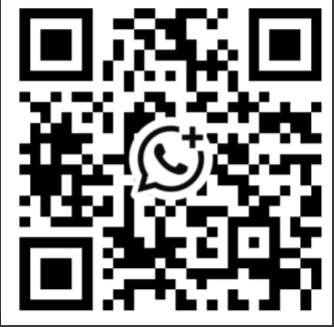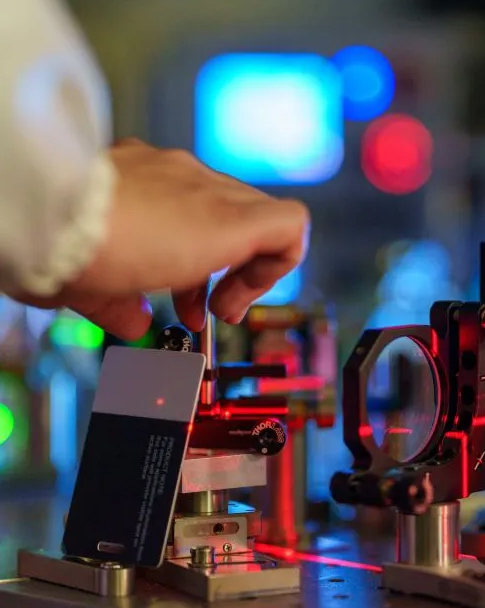
Choosing the right projection vein finder can change your daily work. It can also help you give better care to patients. Near-infrared light lets you see real-time vein images on the skin. This helps you find vessels fast and with more accuracy. This device is very helpful in emergencies. It helps you succeed on the first try more often. It also makes patients feel less stress.
|
Metric |
Improvement |
|---|---|
|
First-attempt success rates |
Increased by 20% to 50% or more |
|
Procedural time |
Reduced a lot |
|
Number of venipuncture attempts |
Lowered |
You can also see more patients and use your tools better. Pick devices that show clear images. Make sure they are easy to carry and work well for the best results.
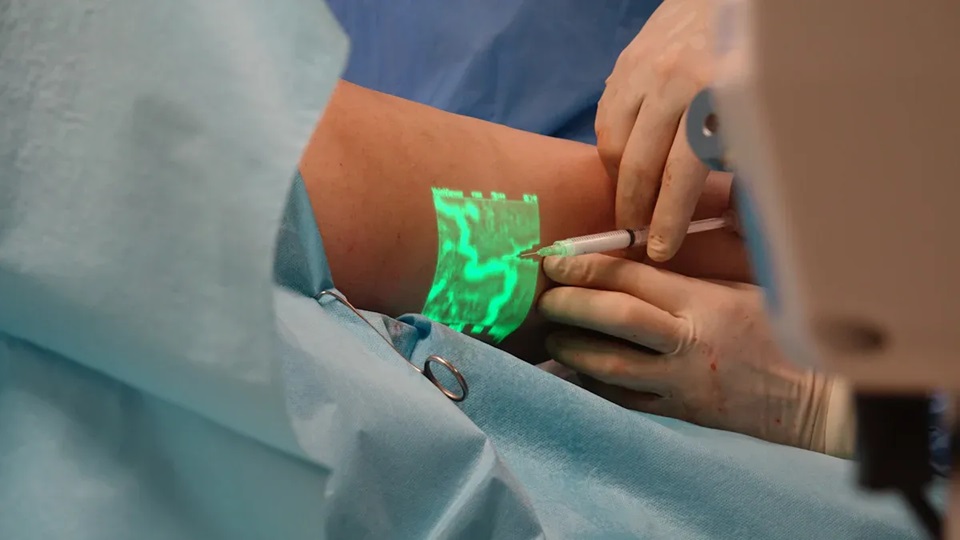
Picking the best projection vein finder helps patient care. It can make first-try success go up by 20% to 50%.
Find devices that show images in real time. Make sure they have lights you can change. They should be easy to carry. This helps in busy clinics.
Think about your patients and your clinic when you choose a vein finder. This makes sure it works for your patients’ needs.
Choose devices that have safety certificates. They should be simple to clean. This keeps germs away and keeps patients safe.
Train your staff to use the vein finder well. This helps your clinic work better and makes the device more useful.
You want to make patient care better and make your job easier. A projection vein finder lets you see veins under the skin. This tool is very helpful for kids or people with hard-to-find veins. Studies say this device helps nurses find veins on the first try in kids who are hard to poke. You may also spend less time on each procedure and babies may feel less pain. These good things help both patients and staff feel less stress. When you use a device that shows real-time images, you can find veins faster and avoid poking someone many times. This means you can draw blood or start an IV with more confidence. Good vascular access means fewer problems and keeps patients safe in your clinic.
Tip: Using a projection vein finder can help you lower pain and anxiety for your patients, especially in pediatric and neonatal care.
You should look for some important features when picking a projection vein finder. Experts say you should focus on these things:
Real-time vein projection helps you see veins right away.
Adjustable light intensity lets you see veins on any skin color.
Variable color coding helps you see veins in any room.
Portability and ergonomic design make it easy to use in busy places.
Image clarity and depth display help you find veins fast and keep patients comfortable.
You should also check if the device has FDA approval and ISO 13485 certification. These show the device is safe for medical use. A good vein finder gives you clear images and helps you work faster. When you pick a device with these features, you can collect blood and start IVs more easily. This makes your work smoother and helps your patients get better care.
|
Feature |
Why It Matters |
|---|---|
|
Real-time projection |
Shows vascular structures instantly |
|
Adjustable light intensity |
Improves visibility for all skin types |
|
Portability |
Lets you move easily between patients |
|
Image clarity |
Helps you find veins with confidence |
|
Safety certifications |
Ensures patient safety and reliability |
Picking the right portable projection vein finder helps you give better care. You can make blood draws and IV starts easier for everyone. Always choose features that fit your clinic and help your patients get the best results.
Think about your patients’ ages and health before picking a projection vein finder. Kids, babies, and older people often have small veins. Some patients have health problems that make veins hard to see. Studies say VeinViewer and AccuVein help find veins in young patients. The table below shows how these devices work for different ages:
|
Study |
Device Used |
Patient Age Range |
First-Attempt Success Rate |
Notes |
|---|---|---|---|---|
|
Kim et al (2012) |
VeinViewer |
1 month - 16 years |
69.4% (VeinViewer) vs 66.7% (Control) |
Significant improvement in difficult veins |
|
Kaddoum et al (2012) |
AccuVein AV300 |
Median age 4.6 years |
75% (AV300) vs 73% (Standard) |
No significant difference overall |
|
Perry et al (2011) |
VeinViewer |
Median age 3 years |
79% (Standard) vs 72.1% (Device) |
Nurses found device helpful for difficult cases |
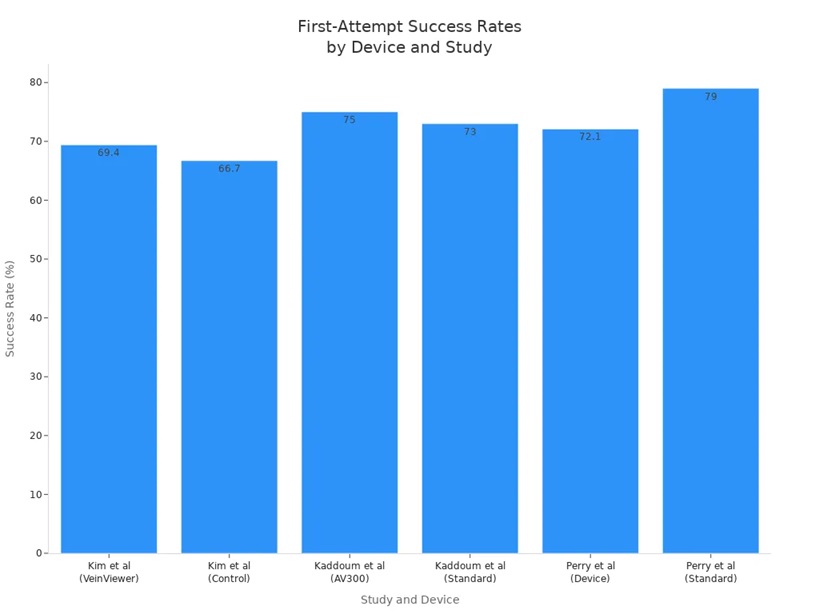
You can see that finding veins is easier for patients with hard-to-find veins. This means less pain for patients and keeps them safer.
Think about how often you do blood draws or iv insertions. Busy clinics need a device that works a lot. If you see many patients, you need a strong battery and fast charging. This helps you work without stopping and keeps things running well. Devices with clear images and good depth help you work faster and better.
Tip: If you use a vein finder many times each day, pick one that is tough and simple to clean.
Where you work changes what you need. Emergency rooms, clinics, and hospital wards all need different things. Hospitals often get over 90% first-try success with vein visualization systems. This means you can draw blood or start an iv faster and with fewer tries. In busy places, you need a device that is easy to carry and always works. Some patients, like those who are overweight or dehydrated, have veins that are hard to see. Vein finder technology uses near-infrared light to help you find these veins. This makes it easier to insert needles and helps staff give better care.
|
Evidence Type |
Description |
|---|---|
|
Success Rates |
Studies show hospitals using vein visualization systems get much better first-try success, often over 90%. |
|
Time Efficiency |
Old ways of finding veins can take a long time, especially if you miss. Vein visualization devices help you find veins fast, so you get it right the first time. |
|
Patient Challenges |
Some patients, like those who are overweight or dehydrated, have a hard time with blood draws. Vein visualization technology uses near-infrared light to show veins that you can’t see with normal light. |
Pick a device that fits your clinic. This helps you collect blood, start ivs, and keep patients safe.
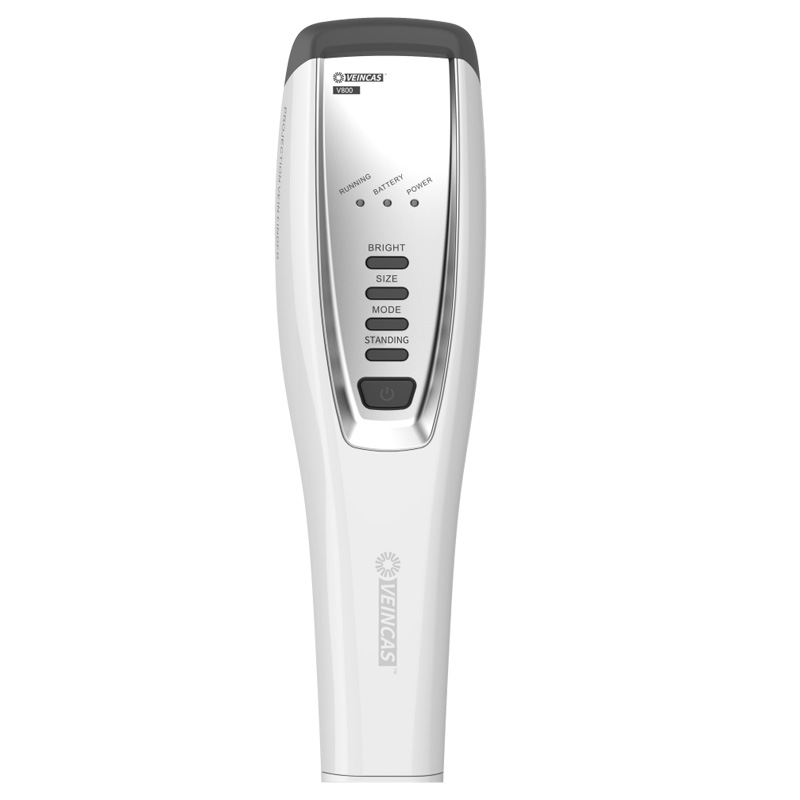
When picking a projection vein finder, look for clear images and good focus. These features help you see veins on the skin. A clear imaging vein finder uses near-infrared light. Blood absorbs this light, but tissue reflects it. This makes a sharp, real-time picture of the veins. Some top vein finders, like the VS 400 Vein Viewer and Vdetector-P2, use special cameras and LED lights. These tools project detailed images. These features help you find veins fast and lower the chance of missing one. Good image clarity lets you see small details, called detail recognition. This helps you make better choices during medical work.
VeinViewer uses a special way to make high-definition images in real time.
Vdetector-P2 shows an image on the skin using a camera and LED light.
Transillumination devices use near-infrared light for real-time, non-invasive images.
Tip: High image clarity helps you find veins on all skin tones and in different lighting.
Infrared wavelength is important for seeing veins well. Experts say you should use vein finders with at least 850 nm wavelength. This helps you see a bigger difference between veins and tissue. Devices with the right wavelength show veins clearly, even on dark skin. Using a device that meets this standard helps you find the right vein on the first try. This makes your work faster and safer for patients.
Depth resolution and visual layering are important for success. If you can see how deep and wide a vein is, you can pick the best spot for a needle. Medical groups support using vein visualization technology because it helps you check patient anatomy. This leads to better choices for IVs and blood draws. Research shows that deeper veins are harder to puncture. Devices that show depth and size help you avoid painful or tricky spots. This makes patients feel better and more comfortable. When you use a device with strong depth and size features, you make better choices and get better results in healthcare.
You want a projection vein finder that is easy to carry. A light device helps you move fast between patients. Many doctors and nurses work in busy places. You need a device that fits in your hand or pocket. Some portable vein finders weigh less than 0.3 kg. The table below shows the average weights and sizes:
|
Product Name |
Weight (kg) |
Dimensions (cm) |
Price |
|---|---|---|---|
|
Uvein-VF3 |
N/A |
N/A |
$1,350.00 |
|
Infrared Portable Vein Locator |
0.28 |
683833 |
N/A |
A small device helps you act fast in emergencies. You can use it for blood draws, iv catheter insertion, and venipuncture without getting tired. Being able to carry it easily helps you work better and give good care.
You need a device that is simple to use. Doctors and nurses want to focus on patients, not on hard controls. Most projection vein finders have one button. You can turn it on and see veins right away. Simple controls help you work faster and make fewer mistakes. You can teach new staff quickly. Easy-to-use devices make blood draws and iv starts smoother for everyone.
Tip: Pick a device with clear instructions and easy controls. This helps you avoid mistakes during medical work.
Real-time images help you see veins while you work. You can spot blood vessels and check how deep they are. This helps you get the vein on the first try. Some devices use noise reduction. This feature removes extra signals and shows only the veins. You get clearer images and better detail. Doctors and nurses use these features to make safe choices during blood draws. Fast images and noise reduction help you feel sure and keep patients safe.
You must check if your projection vein finder meets medical rules. Certification means the device is safe to use in hospitals. Different places have their own rules for medical devices. In the United States, projection vein finders are usually Class 1 510(k) exempt. This means you do not need FDA approval for these devices. In the European Union, these devices are also Class 1 and do not need extra certification. Makers still have to follow strict rules and show their products are safe. An outside group checks the device before it is used in clinics.
|
Certification Type |
Region |
Requirement |
|---|---|---|
|
Class 1 510(k) exempt |
United States |
No FDA approval required |
|
Class 1 device |
European Union |
No additional certification |
Note: Always make sure your device has the right certification for your country. This helps keep patients safe and follows the law.
Stopping infections is very important in all healthcare places. You want to stop germs from spreading between patients. Many new projection vein finders use a no-contact design. This means you do not touch the patient’s skin with the device. This helps keep your work area clean and safe. Some devices have smooth surfaces that are easy to wipe. You can clean them quickly after each use. These things help protect both patients and staff from infection.
The no-contact design stops direct contact with patients.
Smooth surfaces make cleaning easy and fast.
You should always follow your clinic’s cleaning rules. Good infection control keeps everyone healthy.
You should think about how much money you can spend. Professional projection vein finder prices are very different. Some simple models cost less than $50. The most advanced ones can be over $3,000. The price depends on what features the device has. If you want high-definition images or more brightness, it will cost more. Special cases or extra options also make the price go up. Pick a device that has what your clinic needs. Do not pay for things you will not use.
|
Device Name |
Price |
Features |
|---|---|---|
|
AccuVein AV500 |
$2,198 |
Advanced vein map clarity, 3 levels of brightness, moisture-proof casing |
|
Aimvein Pro 2.0 |
$1,830 |
Imaging depth of 7-10 mm, free shipping, 14-day money-back guarantee |
|
Aimvein Pro 3.0 |
$2,320 |
|
|
Hellovein Max 3.0 |
$3,698 |
Best HD image quality |
|
NAVI-60 |
$3,077.95 |
Best versatile vein finder |
|
Veinlite EMS PRO |
$379 |
26 LEDs, color contrast, power-saving switch, contamination-control covers |
|
Cheapest Option |
$34.99 |
26 LEDs with color contrast for different skin types |
|
SIFVEIN-4.6 |
$3,990 |
3 different vein color options, 4 levels of image brightness |
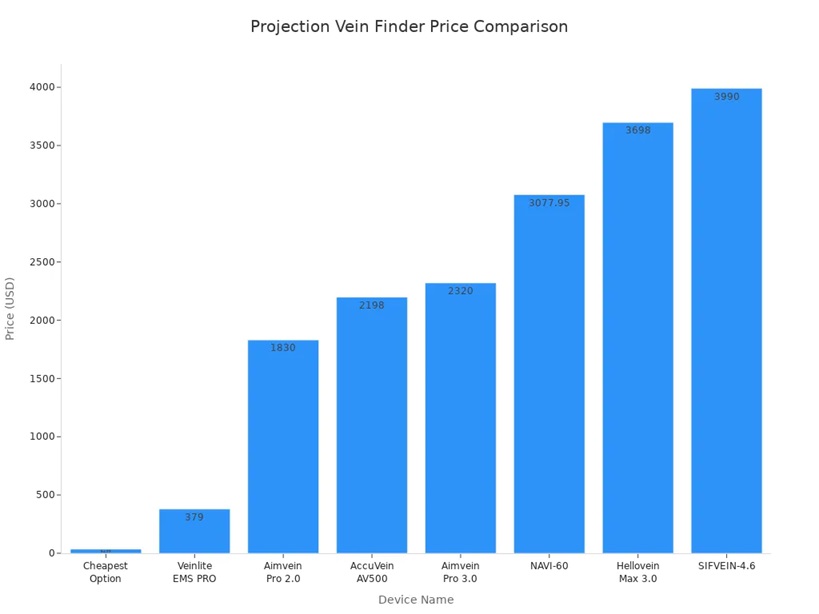
Think about how much you will spend later too. Some devices need special batteries or new parts. Others last a long time and do not need much extra. If you work in a busy place, a more expensive device may save money later. Strong features can help you work better and faster.
A good warranty helps you feel safe about your buy. Most projection vein finders have at least a one-year warranty. Some brands give you two years. Check if the company helps you clean the device easily. Good customer support is important. Some devices, like AimVein, do not need special care. You just wipe them after each use.
|
Aspect |
Details |
|---|---|
|
Warranty |
Minimum 1–2 years |
|
Maintenance Requirements |
Check for strong customer support |
|
Firmware Updates |
Availability of updates is crucial |
Tip: Always ask if you can get firmware updates. Updates help your device work better and add new things.
Pick a device that is easy to take care of and lasts long. A strong warranty and easy cleaning help you avoid problems. This keeps your clinic working well.
You want your team to feel sure when using a projection vein finder. Training helps doctors and nurses learn to use these devices fast and safely. Many companies give both online and in-person lessons. These lessons teach you how to get clear images and use the device with real patients. Here are some well-known training choices:
|
Program Name |
Description |
Format |
|---|---|---|
|
Christie Assure Program |
Online lessons for HD VeinViewer® products, with product info and how to use it in clinics. |
Online and In-person |
|
AccuVein Education |
Virtual lessons and on-site classes about NIR-guided PIV access. |
Virtual and On-site |
You can pick the lesson type that fits your clinic best. Good training means your team makes fewer mistakes and gives better care. You also save time because your team learns to use the device quickly.
Tip: Keep training your team often so they know about new features.
A projection vein finder should fit well into your daily work. You want a device that works with your other tools and systems. When you get new technology, think about how it will change your work steps. The table below shows what helps and what can cause problems:
|
Key Factors for Integration |
Common Pitfalls in Procurement |
|---|---|
|
Scalability: Integration into existing workflows |
Overestimating device capabilities without clinical validation |
|
Compliance: Meeting regulatory standards |
Choosing vendors based solely on initial cost |
|
Innovation: Incorporating technological advancements |
Neglecting regulatory compliance and post-market surveillance |
|
Long-term ROI: Reducing procedure times and costs |
Failing to consider integration with existing healthcare IT systems |
|
N/A |
Ignoring user training and support needs |
You may have some problems. Sometimes, it is hard to see how deep a vein is with projection technology. You might need help from another person to hold the device while you use the needle. If you plan ahead, you can stop these problems. When you pick a device that fits your work, your team works better and keeps patients safe.
Make sure the device works with your current systems.
Teach your team to use the device and help each other.
Check that the device follows all safety rules.
A smooth work process helps everyone do better.
It is important to see what other people say before you pick a projection vein finder. Customer reviews tell you real stories from clinics. You can find out what is good and bad about each brand. Many doctors and nurses share their thoughts online or in groups. This feedback helps you not make expensive mistakes.
Here is a table that shows what users say about some top brands:
|
Brand |
Key Features |
User Feedback |
|---|---|---|
|
Accuvein AV500 |
Lightweight, rechargeable battery, movement tolerant, easy to clean |
Users appreciate its effectiveness and ease of use, especially in clinical settings. |
|
VeinSight VS500 |
Saves and exports vein images, vein centerline, small and lightweight |
Users find it convenient and useful for comparing veins before and after procedures. |
|
AimVein Pro 2.0 |
Easy to use, clear vein map, complete operating manual available |
Users report faster punctures and high performance, meeting patient expectations. |
You can look for these things in reviews: Accuvein AV500 users like that it is light and easy to clean. VeinSight VS500 gets good comments for saving and exporting images, which helps with work. AimVein Pro 2.0 users say it helps them work faster and makes patients happy.
Tip: Ask your coworkers in healthcare which brands they like best. Their tips can help you pick the right one.
You need good after-sales support when you buy a projection vein finder. Good support means you get help if something breaks. Reliable brands answer fast, fix things easily, and give clear instructions. Some companies help you online, by phone, or even come to your clinic. You should check if the brand gives updates for the device. Updates can make the device work better and add new things.
A trusted brand will also give you a clear warranty. This keeps your money safe and helps your clinic run well. When you pick a brand with good support, you save time and worry less. Your team can focus on patients, not on fixing machines.
Note: Always ask about after-sales help before you buy. Good support really helps in daily healthcare work.
When picking a projection vein finder, think about how it helps patients and makes work easier. Near-infrared technology lets you see veins better. This helps with problems during venipuncture for all patients. Ask your clinical staff to help you choose. Use this checklist to help you decide:
|
Feature |
Why It Matters |
|---|---|
|
FDA-certified |
Makes sure the device is safe and works well |
|
Ergonomic design |
Keeps you comfortable if you use it a lot |
|
Adjustable settings |
Lets you use it for many different needs |
|
Long battery life |
Makes sure your device works all day |
Ask vendors for a demo to find the best device for your clinic.
Leave A Message
Scan to WhatsApp :
